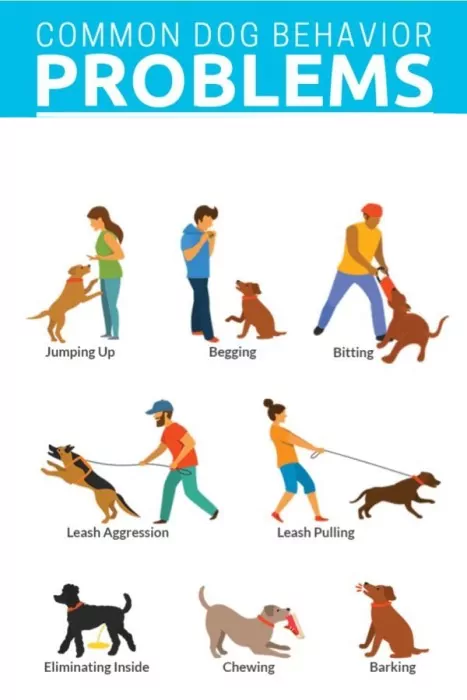Puppy obedience programs for a successful learning experience.
Puppy obedience programs for a successful learning experience.
Blog Article
Master Necessary Commands: Effective Pet Training Facilitated
Effective pet dog training is a fundamental element of accountable family pet possession, and grasping important commands functions as the foundation for an unified connection in between handler and dog. Commands such as "Sit," "Keep," and "Come" not only facilitate communication however also promote a much safer atmosphere. Utilizing positive reinforcement methods can improve the discovering experience, yet many encounter obstacles in attaining regular results. Understanding the subtleties of canine behavior and the training procedure is vital; however, the journey to a well-trained pet dog frequently presents unanticipated difficulties that call for attention. What approaches can genuinely change these difficulties into chances for growth?
Recognizing Your Dog's Habits
To understand the nuances of efficient pet dog training, it is essential to break down and assess your canine's habits. Dog training. Recognizing the motivations behind your pet dog's activities is crucial; behaviors can come from instinct, worry, exhilaration, or a need for focus. By observing your dog in different circumstances, you can determine patterns that may indicate underlying feelings or demands
For circumstances, a dog that barks excessively may be expressing boredom, anxiousness, or a need for social interaction. On the other hand, a pet that displays destructive habits may be seeking excitement or relief from stress and anxiety. Identifying these triggers permits you to customize your training strategy efficiently.
In addition, it is important to consider the pet's breed features, as they can influence actions dramatically. Some types are predisposed to details attributes, such as herding or protecting reactions, which can affect their reactions to certain stimuli.
Finally, uniformity in your responses to your canine's actions fosters a better understanding in between you and your family pet. This mutual comprehension is fundamental for developing trust fund and promoting an effective training process that nurtures both behavior correction and positive reinforcement.
Necessary Commands to Instruct
Educating crucial commands is an essential facet of reliable pet training, giving the structure for a mannerly and receptive pet. These commands not only boost interaction in between the owner and the pet dog yet also make certain safety and security in different environments.
The most crucial commands consist of "Sit," which motivates your pet to continue to be stationary and tranquil; "Stay," which strengthens the concept of continuing to be in one area until released; and "Come," which is essential for remembering your canine from possibly hazardous situations. "Down" teaches dogs to relax, promoting relaxation and control, while "Leave it" aids avoid pet dogs from picking up damaging or unwanted products.
" Heel" is another essential command that urges your pet to stroll closely next to you, boosting leash manners. "No" serves as an essential boundary-setting command, assisting to deal with unfavorable habits.
Training Techniques for Success
Efficient canine training counts heavily on using a variety of methods that accommodate both the canine's learning style and the owner's training objectives. One key strategy is positive reinforcement, which entails gratifying desired actions with deals with, appreciation, or play. This approach encourages the pet to repeat those actions, promoting a solid other bond in between proprietor and Homepage family pet.

An additional reliable technique is remote control training, where a distinctive noise, made by a clicker, marks the specific minute a dog executes a desired action. This precise timing helps dogs associate the behavior with the reward, boosting their understanding.
Consistency is vital in all training approaches. Developing clear commands and maintaining the very same cues helps the dog understanding assumptions a lot more quickly. Additionally, short, engaging training sessions prevent monotony and increase retention.
Integrating socializing possibilities is additionally essential. Revealing canines to different atmospheres, individuals, and various other pets aids them develop confidence and adaptability.
Finally, perseverance plays a considerable function in effective training - Dog training. Each canine discovers at their very own pace, and comprehending this can lead to a more pleasurable training experience for both the proprietor and the pet dog. Applying these strategies will certainly set the foundation for efficient pet dog training
Typical Obstacles and Solutions
Despite the very best training techniques, canine owners typically run into usual difficulties that can prevent development. One widespread concern is inconsistency in commands and hints. When member of the family Dog training utilize different commands for the exact same actions, it confuses the dog, causing inconsistent feedbacks. The option depends on establishing a unified technique among all member of the family, guaranteeing that every person uses the very same terminology and signals.

In addition, some pets might show stubbornness or lack inspiration. This can commonly be resolved by incorporating favorable support techniques, such as treats or appreciation, to encourage preferred habits. Tailoring rewards to what your dog discovers most motivating can significantly boost their engagement.
Lastly, concern or anxiousness can hinder progression in training. Recognizing indicators of stress and anxiety and adjusting the training rate appropriately is essential. Employing progressive direct exposure to been afraid stimulations can assist develop self-confidence gradually, helping with an extra reliable training experience.
Maintaining Consistency and Perseverance
Consistency and perseverance are critical in dog training, as they form the foundation for attaining enduring behavior modifications. Canines grow on routine and clear assumptions; hence, preserving a constant strategy in commands, rewards, and modifications is important.
Dogs, a lot like human beings, have varying discovering paces and may not comprehend commands right away. Positive support plays a critical function here, satisfying preferred habits and aiding to cultivate a trusting relationship between the canine and trainer.
Conclusion
Grasping necessary commands is essential to effective pet dog training, fostering boosted interaction and enhancing positive actions (Dog training). Inevitably, a trained dog not just exhibits good habits yet also establishes self-confidence, contributing to an unified connection in between the pet dog and its proprietor.
Report this page